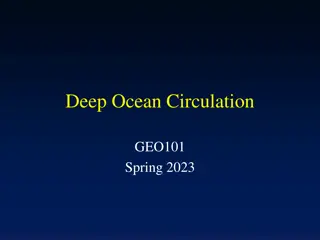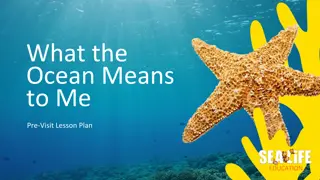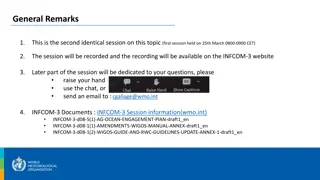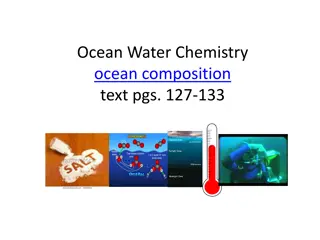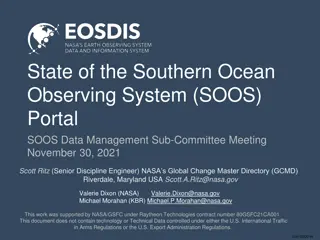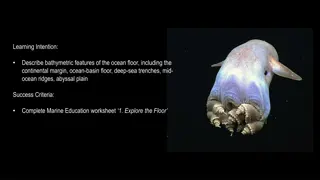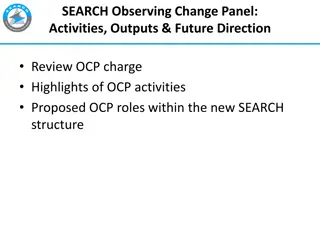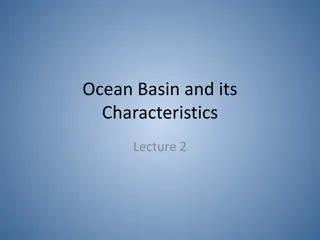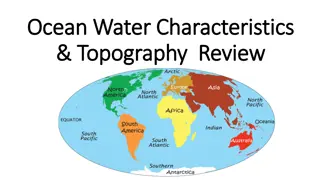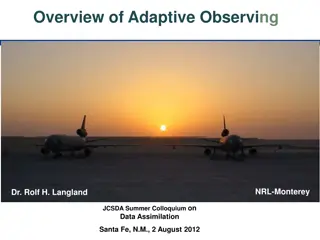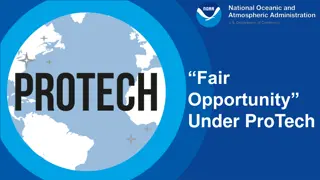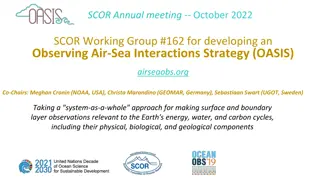An Ocean of Opportunity: Exploring Ocean Observing at Conference OceanObs 19
Discover the latest insights on air-sea heat flux, wind stress, and atmospheric ECVs at the OceanObs 19 conference in Hawaii. Engage with 1200 ocean observing scientists, program managers, and policy experts to chart the next decade of ocean observing and enhance international collaboration on ocean affairs. Join discussions on effective strategies for a sustainable ocean observing system, user-community connections, and societal benefit themes related to ocean observing and information products.
Download Presentation

Please find below an Image/Link to download the presentation.
The content on the website is provided AS IS for your information and personal use only. It may not be sold, licensed, or shared on other websites without obtaining consent from the author. Download presentation by click this link. If you encounter any issues during the download, it is possible that the publisher has removed the file from their server.
E N D
Presentation Transcript
Air-sea heat flux and wind stress Ocean ECVs: relation to AOPC Elizabeth Kent & Robert Weller
An Ocean of Opportunity September 16-20, 2019 Hawai i Convention Center
September 16-20, 2019 Hawai i Convention Center Honolulu, HI, USA For more info: www.oceanobs19.net info@oceanobs19.net OceanObs 19: An Ocean of Opportunity: 1200 ocean observing scientists, program managers, policy experts, and users expected 7 continents represented, including solicitation and publication of conference white papers 3 organizing committees (Program, Sponsor, Local Organizing) Conference Themes* Charting the next decade of ocean observing Connecting observers with users Goal Interacting with the observing community through planning teams and call for papers (18 Dec 2017) Input Building on the Framework for Ocean Observing (FOO) developed at OceanObs 09 Framewor k Registration in Fall 2018. Check website for updates Register
Conference Overview Hawai i Convention Center 16-20 September 2019 (571 Days!) Anchor Sponsor: NASA Co-Sponsors: WMO, IOC, ICSU, GEO, GCOS, NSF, NOAA, ESA, MERCATOR, SOA, IMOS and growing! Main goal/s: Further develop effective strategies for a sustained, multidisciplinary, and integrated ocean observing system, and to better connect user communities and observers. User communities: Engage operational users, national and local authorities as well as researchers in both the public and private sectors in all aspects of ocean observing. International engagement: Closer interaction to improve governance arrangements, support observing networks, data flows and derived products and their use in ocean affairs.
Conference Themes (Preliminary) The societal benefit themes will be examined by their relationship to Ocean Observing and how information products can be best supported through the observing system themes. Overarching Themes Societal Themes
Framework for Ocean Observing (FOO) OceanObs 19 will build on the success generated by the Framework developed at OceanObs 09. Experts will work during the lead up to the conference to identify opportunities and drawbacks, which will be articulated prior to, and during OceanObs 19. We expect to develop a number of follow-up activities including update of existing processes.
OceanObs19 abstracts planned Include .. Air-sea fluxes Observations for surface marine climate records Marine climate data system Also decadal vision statements for each of JCOMM observing networks
JCOMM working to establish climate KPIs The WMO RRR approach has proved problematic: swift delivery isn't always important for climate data products not always desirable to combine all types of observations may want in situ only, or to withhold some high quality data for validation widely spaced observations/platforms give good coverage but make it hard to assess quality through e.g. "buddy checks" Need requirements for accurate large space and time averages (e.g. global, hemispheric and basin annual means with good stability over time) need assessments of data uncertainty for each ECV and obs. type recognise need for multi-variate observations with metadata understand the roles of different types of marine observations Feed back requirements and assessments to GCOS
From: R. Weller, WHOI Air-sea fluxes surface heat flux and wind stress on a global basis: is it possible? TOGA Coupled Ocean Atmosphere Response Experiment lessons from an air- sea flux perspective (Weller et al., 2004). You can bring diverse platforms and heterogeneous sensors together and close upper ocean heat and freshwater budgets, with accurate surface fluxes being one component. To do so you should: Make high quality in-situ observations from long-term moorings (surface flux reference sites) and from ships; Commit to dedicated in-situ intercomparison periods, especially of ships and moorings; Commit to pre and post-deployment calibrations, and additional studies as needed to resolve cross- platform differences; Continue intercomparisons and evaluations of flux products from different sources; Have ongoing interaction between the NWP centers and these sources of high quality surface observations both to improve and validate the models; Conduct further field work in the ocean and atmospheric boundary layers, especially in regimes (low wind and high wind) not yet well sampled and continue flux algorithm development; and Continue support for compilation of flux datasets and for efforts to identify and correct biases.
From: R. Weller, WHOI Air-sea fluxes surface heat flux and wind stress on a global basis Strategy relies on surface flux reference sites at critical and representative sites Accurate, high time resolution Sustained Co-located observation of upper ocean T(z), S(z), U(z) Dedicated intercomparisons, calibrations, improvements to establish/improve accuracy Direct turbulent fluxes & waves at select sites; algorithm development Qnet may include compensating errors in its components Observe all components Blended, hybrid, satellite products require regional tuning Marine stratus, large scale atmospheric subsidence, cold/dry, Saharan dust, . Critical areas high amplitude, small spatial scale, strong temporal signal Critical areas data sparse, large disagreements in products Ongoing comparisons of in-situ vs model/remote sensing/blended/hybrid fields drive improvement and delivery of fluxes as EOV
From: R. Weller, WHOI Air-sea fluxes surface heat flux and wind stress on a global basis: developing the strategy The background report captured two sets of requirements, for the broad scale and high resolution, recognizing special regions Global , broad scale sampling High resolution sampling
From: R. Weller, WHOI Air-sea fluxes surface heat flux and wind stress on a global basis: enabling progress Continuing improvements to bulk formulae, to in-situ sensing Present once per minute surface meteorology, 2 to 3 redundant systems plus Direct Covariance Flux Developing increased power generation and directional antenna for 2- way, higher bandwidth telemetry
From: R. Weller, WHOI Air-sea fluxes surface heat flux and wind stress on a global basis: enabling progress Continuing improvements to bulk formulae, to in-situ sensing, to integration of Direct Covariance Flux Systems (DCFS) Buoy bulk stress and buoyancy flux with COARE 3.0 vs DCFS stress and buoyancy flux Drag coefficient versus wind speed (top); changes to drag coefficient for COARE 3.5 Surface buoy in Gulf Stream Bigorre et al. (2013)
From: R. Weller, WHOI Air-sea fluxes surface heat flux and wind stress on a global basis: enabling progress Improvements to mooring technology enabling deployments not only in challenging regimes such as western boundary currents but also at higher latitudes
From: R. Weller, WHOI Air-sea fluxes surface heat flux and wind stress on a global basis: elements of the strategy Surface flux reference sites Time series moorings, sustained, high temporal resolution Representative and critical sites, ~10 per ocean basin Well-instrumented VOS Include supply ships going to polar regions Select upgraded routes for spatial structure and representativeness of flux reference sites Gridded products (reanalysis, satellite, blended) Tuned/validated against flux reference sites Ongoing, facilitated comparisons Attention to quality, improvement Dedicated in-situ comparisons Sensor and bulk formulae improvements Hybrid products with assimilation and/or constraints
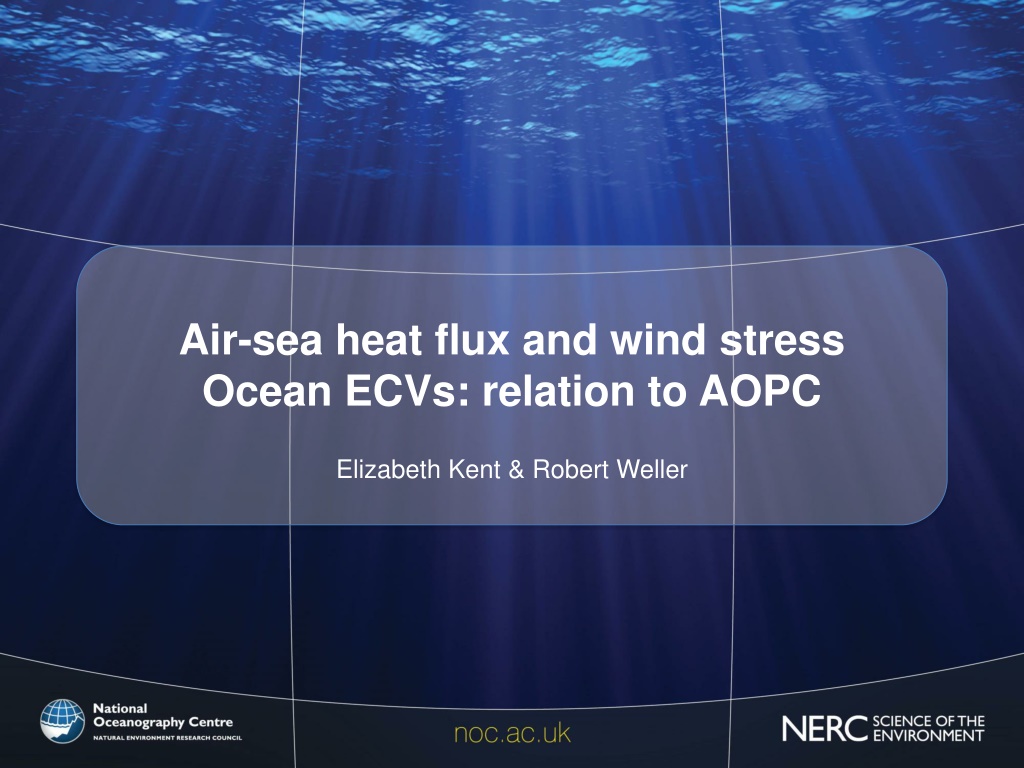


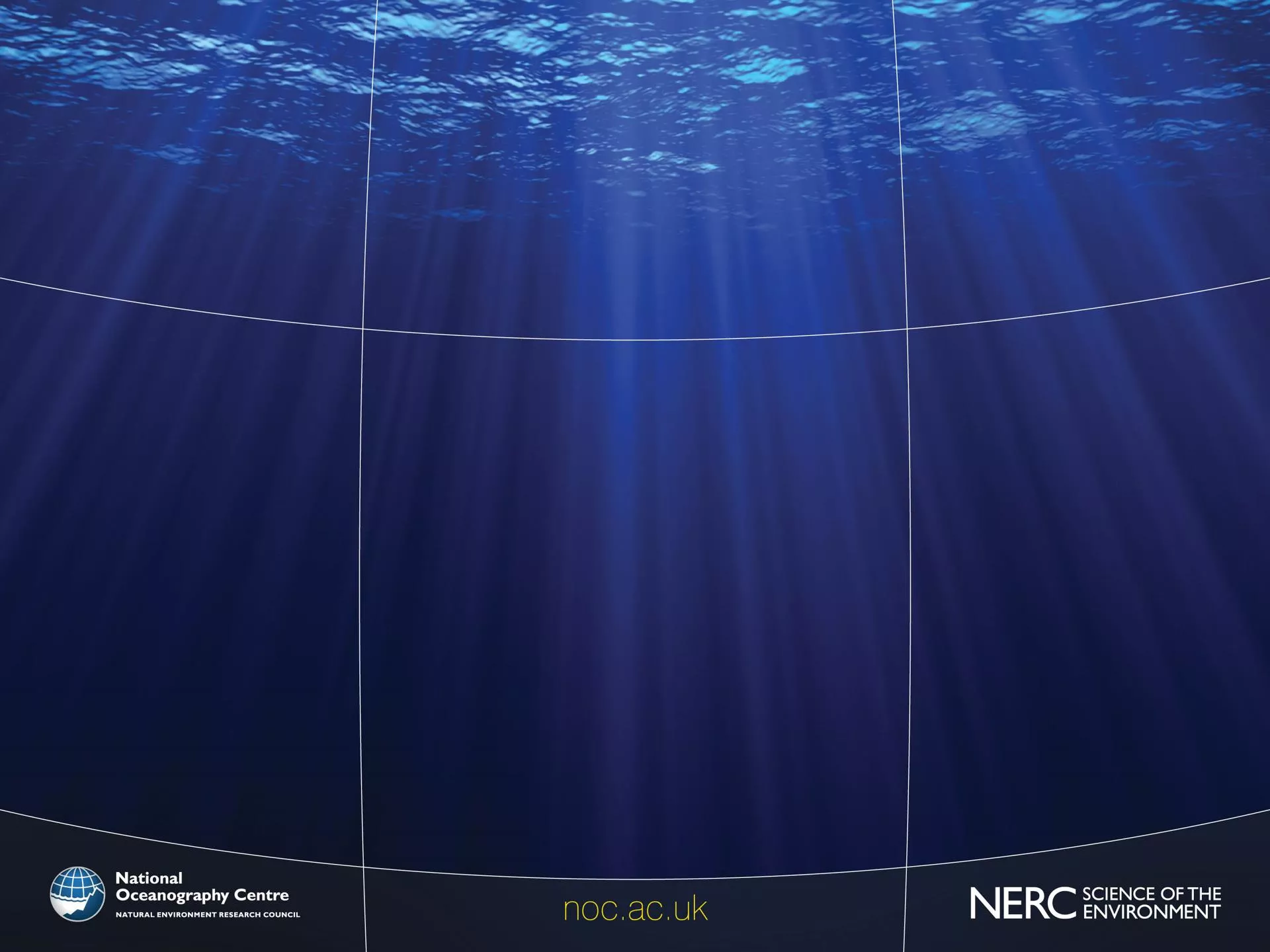








![[PDF⚡READ❤ONLINE] Solar Surveyors: Observing the Sun from Space (Springer Praxis](/thumb/21536/pdf-read-online-solar-surveyors-observing-the-sun-from-space-springer-praxis.jpg)


